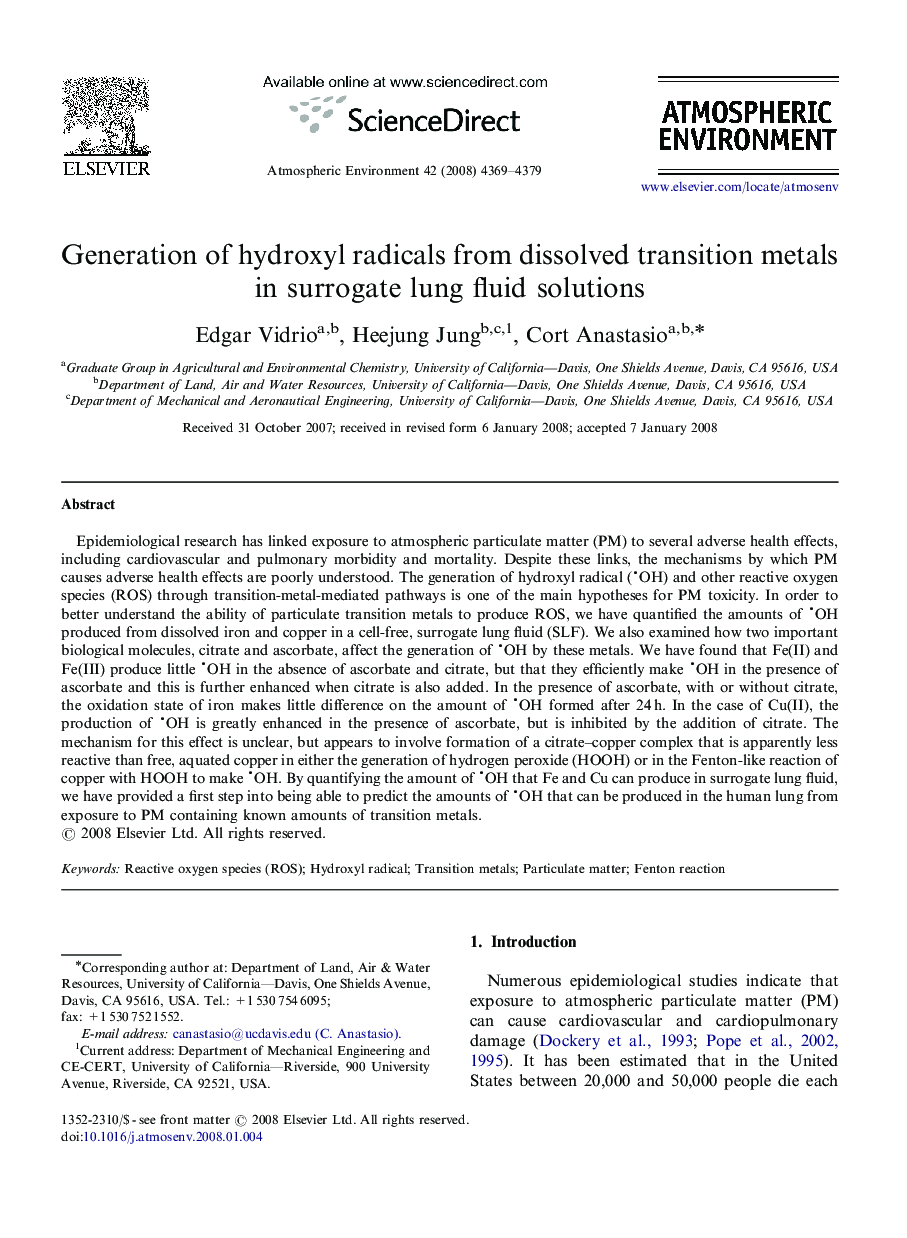| کد مقاله | کد نشریه | سال انتشار | مقاله انگلیسی | نسخه تمام متن |
|---|---|---|---|---|
| 4442926 | 1311171 | 2008 | 11 صفحه PDF | دانلود رایگان |

Epidemiological research has linked exposure to atmospheric particulate matter (PM) to several adverse health effects, including cardiovascular and pulmonary morbidity and mortality. Despite these links, the mechanisms by which PM causes adverse health effects are poorly understood. The generation of hydroxyl radical (OH) and other reactive oxygen species (ROS) through transition-metal-mediated pathways is one of the main hypotheses for PM toxicity. In order to better understand the ability of particulate transition metals to produce ROS, we have quantified the amounts of OH produced from dissolved iron and copper in a cell-free, surrogate lung fluid (SLF). We also examined how two important biological molecules, citrate and ascorbate, affect the generation of OH by these metals. We have found that Fe(II) and Fe(III) produce little OH in the absence of ascorbate and citrate, but that they efficiently make OH in the presence of ascorbate and this is further enhanced when citrate is also added. In the presence of ascorbate, with or without citrate, the oxidation state of iron makes little difference on the amount of OH formed after 24 h. In the case of Cu(II), the production of OH is greatly enhanced in the presence of ascorbate, but is inhibited by the addition of citrate. The mechanism for this effect is unclear, but appears to involve formation of a citrate–copper complex that is apparently less reactive than free, aquated copper in either the generation of hydrogen peroxide (HOOH) or in the Fenton-like reaction of copper with HOOH to make OH. By quantifying the amount of OH that Fe and Cu can produce in surrogate lung fluid, we have provided a first step into being able to predict the amounts of OH that can be produced in the human lung from exposure to PM containing known amounts of transition metals.
Journal: Atmospheric Environment - Volume 42, Issue 18, June 2008, Pages 4369–4379